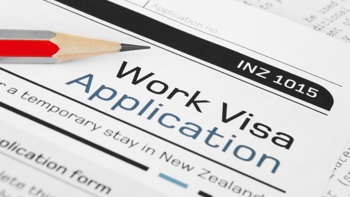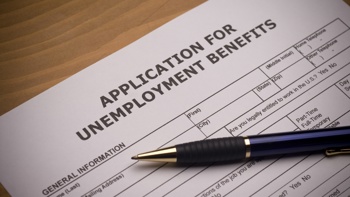One year on from the day New Zealand forever left the Covid-free comfort of Level 1, a modeller says Kiwis who haven't yet caught the virus are now a minority.
But without a nationwide infection prevalence survey – soon to be launched by the Ministry of Health – it remains unclear just how many Kiwis have been exposed to Covid-19.
As at today, the official case tally stood at 1,696,239 – that's a third of our resident population – of which just 28,775 were probable reinfections.
But as Professor Michael Plank, of Covid-19 Modelling Aotearoa, pointed out, these were only those cases that had been notified after people got themselves tested and reported their results.
"The proportion of infections that are reported is probably somewhere between 40 per cent and 65 per cent," Plank said.
"It's unlikely to be much less than 40 per cent because at least 40 per cent of all 20 to 25 year olds have already reported a case."
On the other hand, he said, the reported infection rate was typically less than 65 per cent of the infection rate in routinely tested cohorts such as border workers.
"This means it's likely that at least half of New Zealanders have had Covid-19, although those that haven't probably still represent a significant minority."
In epidemiology, the ratio of the number of infections in the community to that of "confirmed" cases is called the case ascertainment rate, or CAR.
"This rate will typically change over time, depending on a number of factors such as how easy it is for people to access tests and how inclined they are to seek a test and to report the result," explained fellow modeller Dr Dion O'Neale.
Most estimates put New Zealand's CAR above 33 per cent – but probably below 50 per cent.
"If we ignore reinfections this means that the number of infections that we have had in Aotearoa is at least roughly twice the number of confirmed cases - so over three million."
But things got a bit trickier when it came to working out how the CAR affected estimates of the number of reinfections, given the CAR applied for both the first infection and for later infections.
If someone's initial infection wasn't recorded as a confirmed case, then their second wouldn't be classified as a reinfection – meaning we could be under-estimating reinfections, or even over-counting the number of individuals who've had the virus.
That had clear implications for disease modelling, as uncertainty about a population's immunity history made it tougher to say just how susceptible it might be to future infection.
After the country's winter Omicron wave peaked at a lower numbers than worst-case scenarios earlier modelled, for instance, O'Neale and other experts surmised the surge had met a higher level of immunity than thought.
That was likely because more people than thought were infected in our first, BA.2-fuelled wave – but also because there'd been greater "immunity transfer" from BA.2 to BA.5 than initially estimated.
There were plenty of reasons for infections being under-reported – and it didn't always come down to people not bothering to get tested or turn in their results.
"Estimates are that as many as 40 per cent of infections may be asymptomatic," O'Neale said.
"Unless these people know that they have been in contact with a confirmed case – for example, a family member who has tested positive – or unless they are testing independently of symptoms, these people may never have had a reason to test during their infection."
So how could we get a better handle on things?
Aside from genome sequencing and case reporting, New Zealand now has one of the world's best systems for Covid-19 wastewater surveillance.
This could tell us much about what variants were circulating – BA.5 remains our most-sampled Omicron sub-type – but also whether the CAR in a given region was changing, by comparing the amount of detected virus in sewage to case numbers.
Still, it couldn't reveal just how many infections there were.
Experts hope an infection prevalence survey regularly sampling a sub-set of the population, and which the ministry has been developing for months, will finally give them much of that fine-grain data.
"Once under way, this will give extremely useful information about infections in the community and how they are distributed," O'Neale said.
These surveys were often combined with seroprevalence surveys, which also looked for Covid-19 antibodies from past infection.
"While antibody markers do fade over time, seroprevalence surveys can help to give us a view back to past infections, even when people have now recovered."
ESR principal scientist Professor Michael Bunce noted how, in the UK, such an approach revealed how 95 per cent of the population had been exposed to the virus – and increasingly with Omicron.
It showed that, among one cohort of primary school children, around 40 per cent had been exposed by November last year – but by March, that proportion had ballooned to more than 80 per cent.
But even with smarter surveillance measures, Bunce said that calculating the true number of infections would always remain a challenge.
And trying to determine how vulnerable or resilient we'd be to the next Covid-19 wave was similarly tricky.
We had to consider not just our level of immunity from vaccines and infection, but other factors like our own behaviour, the benefits of new shots and treatments, and new variants that might dodge what we put in front of them.
"Taken together, this shopping list of factors paints a picture of why it is difficult to predict how protected or vulnerable New Zealanders might be," Bunce said.
"While we would like to be more certain what the virus's next move might be, history has taught us that diseases are adept at changing the 'playing field' and as we adapt our strategies we nudge the virus in different directions."
Take your Radio, Podcasts and Music with you









